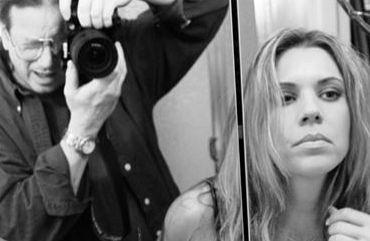By Bill Dobbins www.billdobbinsphotography.com
Lauded as “a transcendent realist” and “a poet of the ordinary,” Keith Carter is an internationally acclaimed photographer whose work has been shown in over one hundred solo exhibitions in thirteen countries. Carter first found his subjects in the familiar, yet exotic, places and people of his native East Texas. For the past two decades he has expanded his range not only geographically, but also into realms of dreams and imagination, where objects of the mundane world open glimpses into ineffable realities. – Wikipedia


Keith Carter has a long history of creating amazing images. He is a distinguished artist, author, educator, and occasional musician. He holds the Endowed Walles Chair of Art at Lamar University in Texas.



Carter is also a recipient of the prestigious Texas Medal of Arts. Other awards include the Lange-Taylor Prize from the Center for Documentary Studies at Duke University and the Regent’s Professor Award from the Texas State University System. Keith is a prolific artist whose work has been shown in over 100 solo exhibitions in thirteen countries. He is the author of eleven books: Fireflies, A Certain Alchemy, Opera Nuda, Ezekiel’s Horse, Holding Venus, Bones, Mojo, Keith Carter Photographs: Twenty-Five Years, Heaven of Animals, The Blue Man, and From Uncertain to Blue. A DVD documentary of his work titled The Photographer’s Series: Keith Carter was produced by Anthropy Arts.
Carter’s work is included in many private and public collections, including the National Portrait Gallery, Art Institute of Chicago, San Francisco Museum of Modern Art, J. Paul Getty Museum, Los Angeles, Museum of Fine Arts, Houston, George Eastman House, Smithsonian American Art Museum, and the Wittliff Collections at Texas State University.
In 2009 Carter was awarded the Texas Medal of Arts. A 2006 documentary on Carter’s work titled The Photographers Series: Keith Carter was produced by Anthropy Arts in New York. In 1997, “Keith Carter: Poet of the Ordinary” was produced as a national television arts segment on CBS Sunday Morning and in 1991 Carter received the Lange-Taylor Prize from the Center for Documentary Studies at Duke University.


KEITH CARTER:Fifty Years
BOOKS BY KEITH CARTER
KEITH CARTER WEBSITE
******************************************************* Bill Dobbins is a pro photographer located in Los Angeles. He is a veteran photographer and videographer who has exhibited his fine art in two museums and a number of galleries and who has published eight books, including two fine art photo books:
The Women: Photographs of The Top Female Bodybuilders (Artisan)
Modern Amazons (Tashen)
WEBSITES
BILL DOBBINS PHOTOGRAPHY
www.billdobbinsphotography.com
BILL DOBBINS ART
www.billdobbinsart.com
FEMALE PHYSIQUE SITES
www.billdobbins.com
EMAIL: billdobbinsphoto@gmail.com
Bill Dobbins is a pro photographer located in Los Angeles. He is a veteran photographer and videographer who has exhibited his fine art in two museums and a number of galleries and who has published eight books, including two fine art photo books:
The Women: Photographs of The Top Female Bodybuilders (Artisan)
Modern Amazons (Tashen)
WEBSITES
BILL DOBBINS PHOTOGRAPHY
www.billdobbinsphotography.com
BILL DOBBINS ART
www.billdobbinsart.com
FEMALE PHYSIQUE SITES
www.billdobbins.com
EMAIL: billdobbinsphoto@gmail.com










